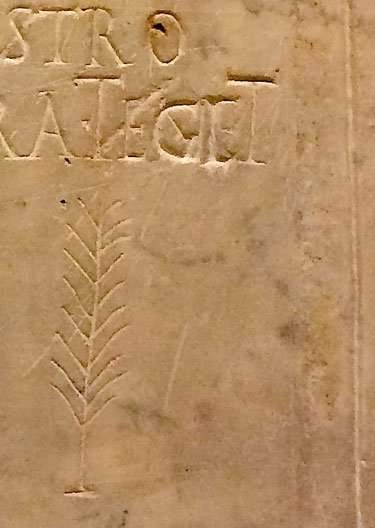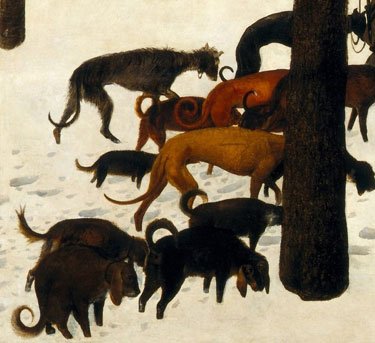Category Archive 'Dogs'
03 Jun 2016


The Atlantic has news about the (dual) origin of man’s best friend.
On the eastern edge of Ireland lies Newgrange, a 4,800-year-old monument that predates Stonehenge and the pyramids of Giza. Beneath its large circular mound and within its underground chambers lie many fragments of animal bones. And among those fragments, Dan Bradley from Trinity College Dublin found the petrous bone of a dog.
Press your finger behind your ear. That’s the petrous. It’s a bulbous knob of very dense bone that’s exceptionally good at preserving DNA. If you try to pull DNA out of a fossil, most of it will come from contaminating microbes and just a few percent will come from the bone’s actual owner. But if you’ve got a petrous bone, that proportion can be as high as 80 percent. And indeed, Bradley found DNA galore within the bone, enough to sequence the full genome of the long-dead dog.
Larson and his colleague Laurent Frantz then compared the Newgrange sequences with those of almost 700 modern dogs, and built a family tree that revealed the relationships between these individuals. To their surprise, that tree had an obvious fork in its trunk—a deep divide between two doggie dynasties. One includes all the dogs from eastern Eurasia, such as Shar Peis and Tibetan mastiffs. The other includes all the western Eurasian breeds, and the Newgrange dog.
The genomes of the dogs from the western branch suggest that they went through a population bottleneck—a dramatic dwindling of numbers. Larson interprets this as evidence of a long migration. He thinks that the two dog lineages began as a single population in the east, before one branch broke off and headed west. This supports the idea that dogs were domesticated somewhere in China.
But there’s a critical twist.
The team calculated that the two dog dynasties split from each other between 6,400 and 14,000 years ago. But the oldest dog fossils in both western and eastern Eurasia are older than that. Which means that when those eastern dogs migrated west into Europe, there were already dogs there.
Here’s the full story, as he sees it. Many thousands of years ago, somewhere in western Eurasia, humans domesticated grey wolves. The same thing happened independently, far away in the east. So, at this time, there were two distinct and geographically separated groups of dogs. Let’s call them Ancient Western and Ancient Eastern. Around the Bronze Age, some of the Ancient Eastern dogs migrated westward alongside their human partners, separating from their homebound peers and creating the deep split in Larson’s tree. Along their travels, these migrants encountered the indigenous Ancient Western dogs, mated with them (doggy style, presumably), and effectively replaced them.
Today’s eastern dogs are the descendants of the Ancient Eastern ones. But today’s western dogs (and the Newgrange one) trace most of their ancestry to the Ancient Eastern migrants. Less than 10 percent comes from the Ancient Western dogs, which have since gone extinct.
Read the whole thing.

Newgrange, the white facade is modern.
26 Apr 2015


The late Dan and Zanto
Opposing Views passes along a story that makes your blood boil.
A man in Denmark was so devastated when authorities seized and euthanized his dog that he took his own life.
Dan, whose last name has not been disclosed, was 27 years old.
Dan was given just eight days to prove that his dog Zanto was not one of the breeds banned in Denmark, and under Danish law, the burden to prove dog breed is placed upon owners. When he was unable to do so, authorities removed Zanto and arranged for him to be killed. Soon after Zanto was taken, Dan was reported to have overdosed on pain medication.
His dog, Zanto, had been euthanized in adherence with Denmark’s Breed Specific Legislation on Pit Bulls. Danish legislation titled the “Dog Act” also dictates that police are required to euthanize dogs that “savage†a person or another dog, but Zanto hadn’t attacked anyone. He was simply considered an illegal breed.
The Dog Act bans the ownership and breeding of 13 breeds of dogs, including the Pitt Bull Terrier, Kangal, South Russian Shepherd Dog and American Bulldog. Some breeds have been illegal since 1991, but legislation in 2010 brought the number to 13.
21 Apr 2015





Peter Kruschwitz
Today, I had the immense pleasure of seeing one of my most favourite inscribed Latin poems – the epitaph for Margarita (‘Pearl’), a lap-dog, born in Gaul, deceased in second or third century Rome.
[T]his marble plaque… is preserved and on display in the British Museum in London (CIL VI 29896 cf. p. 3734 = CLE 1175; for the entry in the BM online database follow this link). …
On the right-hand side, there is a palm leaf incised as an element of decoration.
The inscription has been beautifully laid out (using aid lines) and carved – only in the penultimate letter of the final word tegit (‘covers’), the stone cutter originally made a mistake (writing teget instead of tegit, which he then tried to conceal by giving more emphasis to the I subsequently):
Unsurprisingly, this inscription has received a lot of scholarly attention.
Scholars and amateurs alike were taken by the affectionate way in which these Roman dog-owners (who remain nameless) talked about their pet. The allusion to the epitaph of the Roman poet Vergil in line 1 (Gallia me genuit, ‘Gaul sired me’, following the model of Mantua me genuit; see the learned article by Irene Frings on this topic [in German; available for free here]) was duly noted. …
The inscription, as I said, is a decent-sized marble-slab (61 x 50 cm), beautifully prepared and carved. Margarita was an imported animal from Gaul (it is unclear as to whether this is where her owners picked her up or whether they bought her in Rome as an imported animal). In addition to being a lap-dog, she served as a hound for animal hunts, roaming woods and hills.
In other words, she almost certainly was a costly, precious item owned by a wealthy aristocratic family – a family that would engage in pastimes such as hunting and keeping precious imported pets for display purposes. …
From The Petrified Muse via Ratak Monodosico.
17 Apr 2015

Sad and Useless has a pretty good collection of photos to waste time smiling over.
11 Oct 2014


Deatai from Pieter Bruegel the Elder, Hunters in the Snow, 1565, Kunsthistorisches Museum, Vienna
Karen forwarded this, commenting: “Notice all the curly tails. But are the ears greyhound-like or pendant, like tazis?”
Her reference to curly tails, pertains to the policy of organized hunting packs to cull hounds with curly tails because, when they are bred from, the curvature of the tail tends to migrate forward, producing spinal problems in their offspring.
Tazis are the more northerly form of the Persian, or Oriental, Greyhound, known elsewhere as the saluki.
Bruegel’s hunters’ dogs, I think, consist of three types: I see three long-bodied, short-haired sighthounds (visible on the upper right): greyhounds. The only one whose head is visible has short, pointed ears. The upper left dog, with coarse coat, is a lurcher type (a cross between a sighthound and another kind of breed, either a pastoral guard dog or a terrier). So, too, might be the taller, heavier-built dark brown dog whose loins are concealed behind a tree. The shorter, flop-eared dogs would be scent hounds.
I like the way Image Diver produced this detail image.

Feeds
|

